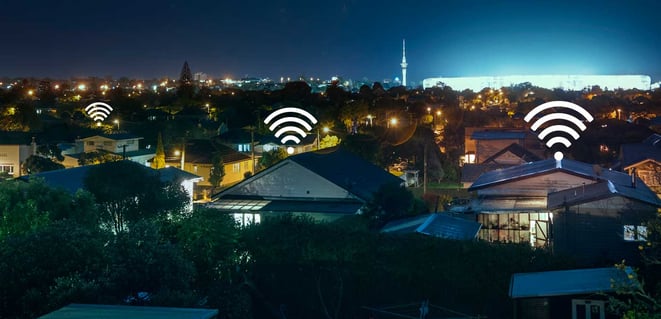
I recently talked about my experience of getting a UFB service at home. It generated a bit of interest and debate, mainly around why I was only getting 18Mbps download on a 30Mbps fibre service. I even got a call from Crown Fibre Holdings asking what was going on.
These seemed like a pretty reasonable questions so I made it my mission to try and solve it. This also got me thinking, if I am a reasonably educated (but not expert) user – what are the various speed traps for the typical consumer?
The first trap is one of expectation setting. DSL services are far more asymmetrical and their performance is limited by how far you are from the exchange. Hence DSL services are described as Full Speed/Full Speed – basically a way of your ISP saying your service at home will be as fast as your speed test result says it is. UFB services are sold differently. Fibre services are not inherently asymmetrical and are not impacted by distance. In addition, unlike DSL, the service providers have set an expectation of speed and performance right up front when you buy the service.
I brought a 30/10 service and so I should expect to get that speed right? Well yes and no. In busy times the performance of the service will be impacted by contention, caused by everyone else being online at the same time. Living in New Zealand also means much of our content comes from offshore which increases latency and also means your ISP has to manage the balance between cost and performance for international capacity. This is another speed trap and is no wonder most ISPs encourage you to speed test to a local server to get the best possible test result.
Using an Ethernet cable from my router and testing to a NZ based server I got pretty close to the advertised line rate of 30/10. This dropped when I tested to overseas servers depending on the time of the day. But in most cases I got better than the 18Mbps that I talked about in my last blog. There lies another speed trap. I use Wi-Fi at home, not only to connect to all my portable devices but also to connect to my desktop. It seems I lost about 10Mbps of performance using Wi-Fi. This was a big surprise!
After consulting the experts, this performance degradation can be caused by two things. Firstly, the quality of the Wi-Fi card in your PC or router can have an impact on performance. Secondly, the default or ISP pre-set configuration in your router may not be optimal for your local environment. I managed to get a 5Mbps speed improvement by tweaking the Wi-Fi settings on my router to avoid competing with my neighbour’s Wi-Fi and also selecting 802.11n and a 20Mhz channel on the router. These are not things that the average user at home would think to adjust. I wonder how many people will just accept the performance they get out of the box and how many will complain that they are not getting the speeds advertised.
I managed to get a further improvement by turning off the Wi-Fi in my ISP provided router and using an enterprise grade Wi-Fi AP. The performance of my Wi-Fi delivered UFB service at home is now almost as good as the results I got over Ethernet.
At least now I understand the UFB speed traps and have chosen to accept a small compromise on speed due to the convenience of Wi-Fi.